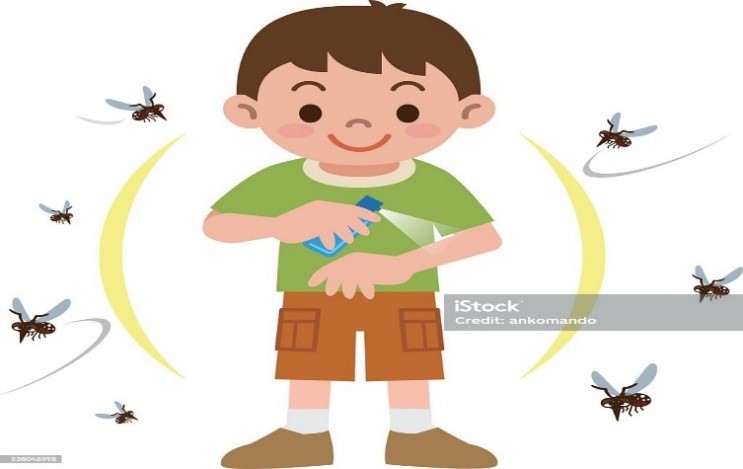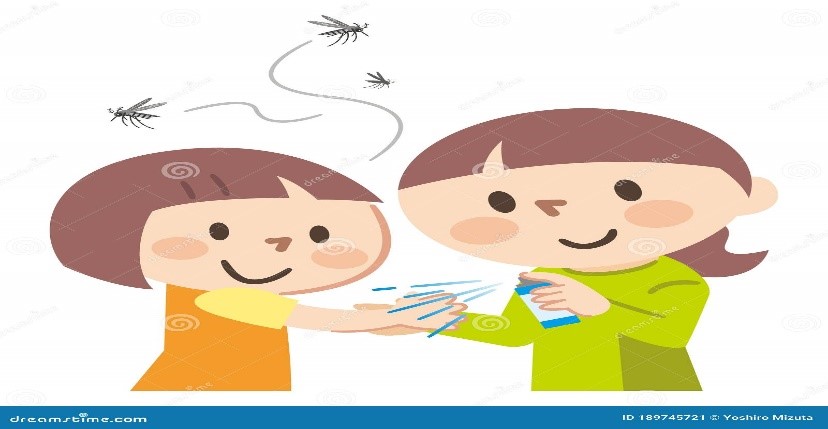Disclaimer [ENGLISH]
Disclaimer: This material is for educational purposes only. You, the reader, assume full responsibility for how you choose to use it. It is not intended to provide medical advice, diagnosis or treatment, nor does it replace the advice or counsel of a doctor or health care professional. Reference to a specific commercial product or service does not imply endorsement or recommendation of that product or service by CPCMG.
What does insect repellant protect against?
- Repellant helps against biting insects:
- This includes ticks, mosquitoes, spiders, biting flies, and chiggers.
- It can repel ants by confusing them, but confused ants may still bite.
- Insect repellants do repel, but do not kill insects.
- Repellant does not protect against stinging insects.

What insect repellants are safe and recommended?
- It is best to use a repellant registered by the Environmental Protection Agency
- The following are registered as safe and effective.
-
DEET
- Highly recommended
- The higher the concentration, the longer the protection:
- 10% provides protection for approximately 2 hours.
- 30% provides protection for approximately 5 hours.
- For children, it is recommended that you never apply higher than 30% concentration.
- The highest concentration is 50%.
- Not be used for infants under 2 months old
-
Picaridin
- The higher the concentration, the longer the protection
- 5% provides protection for up to 3 to 4 hours.
- 20% can provide protection from 8 to 12 hours.
- The higher the concentration, the longer the protection
-
Oil of Lemon Eucalyptus
- This repellant should only be used on children 3 years and older.
- Be sure that it has been approved by the EPA (Environmental Protection Agency)
- The higher the concentration, the longer the protection.
- 8% to 10% protects for up to 2 hours
- 30% protects for up to 6 hours. This is the maximum concentration.
-
Natural Insect Repellants
- Examples include: citronella, soybean oil, geranium, peppermint
- Are known to be safe.
- They are not as effective as repellants noted above but may be effective for short periods of time.
- Are not approved by the Environmental Protection Agency.
- May cause a rash or irritation when applied to skin.

Insect Repellant Tips
- Always read and follow package directions.
- Any repellant might cause skin irritation or rashes.
- To check for irritation: apply a small amount to a small section of skin. 24 hours later apply it again. If there is no reaction your child should be able to tolerate it on larger areas of skin.
- Apply as little as possible on exposed skin and over clothing.
- Skin covered with clothing does not need application underneath.
- Sticks, lotions, and unpressurized sprays are the best options.
- Spray in an open environment to avoid breathing it in.
- Pressurized sprays have a higher risk of inhalation and are more likely to get in your child’s eyes.
- If your child is old enough to apply it themselves, be sure to supervise them.
- For application to the face, spray into an adult’s hand and then apply to child’s face, avoid using on the eyes or mouth.
- Avoid using on your child’s hands as they may touch their eyes, mouth, or put their fingers in their mouth.
- Avoid spraying on irritated skin, or open wounds or cuts.
- As soon as you have returned indoors, use soap and water to wash the repellant off and wash the clothes prior to use again.
- Keep the repellant out of reach of small children.
- If your child does have a reaction, wash the repellant off your child immediately and call your child’s provider or poison control: 1-800-222-1222
- Have the insect repellant nearby when you call to provide more information.
When to call your child’s provider:
- You have further questions about repellants.
- Your child has developed a rash to a repellant.
- You have concerns about a reaction your child is having to a bite.
- You have specific travel exposure questions.
- You think your child needs to be seen.
- Call 9-1-1 if your child is having a life-threatening emergency
This publication was adapted from information within American Academy of Pediatrics Patient Education Handouts, UpToDate Guidelines and Healthychildren.org
Reviewed by: TT D.O, AR D.O. | 11/2023


